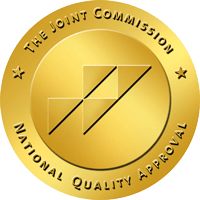Coffee is one of the most popular beverages in the world, coming in second only to water. The boost that this drink provides often helps people wake up and get ready for the day. However, consuming caffeine in high doses can have an unintended effect, leading to restlessness and anxiety. This experience is relatively common and prompted an official diagnosis in the Diagnostic and Statistical Manual of Mental Disorders (DSM-5-TR): caffeine-induced anxiety disorder.
What is Caffeine-Induced Anxiety?
Caffeine-induced anxiety disorder is a subclass of substance/medication-induced anxiety disorders in the DSM-5-TR. Symptoms of this type of diagnosis must meet certain criteria including nervousness or panic attacks that develop soon after consuming this substance. Usually, these feelings will subside when this is no longer in a person’s system which is what differentiates this disorder from others. As a whole, reducing or ceasing use alleviates symptoms.
Caffeine Effects on Anxiety Disorders
People with an existing anxiety disorder are more susceptible to the negative effects of caffeinated drinks. This is largely due to the fact that symptoms of consuming too much of this type of drink overlap with symptoms of these disorders. These include:
- Restlessness
- Rapid Heartbeat
- Excessive Worry
- Dizziness
- Increased Blood Pressure
- Difficulty Concentrating
Because these can have similar effects, together they amplify feelings of nervousness and uncertainty.
Reducing the Effects of Caffeine
The side effects of caffeine can be unpleasant and alarming, especially when people consume it in large quantities. According to the Food and Drug Administration (FDA), people should keep their intake of this substance below 400mg per day. However, this number depends on how sensitive a person is to it. Those with existing diagnoses should pay attention to how their body responds to different quantities of the substance. To reduce negative side effects, some helpful practices include:
- Reducing the number of caffeinated drinks consumed each day
- Avoiding caffeine close to bedtime since it can affect sleep quality
- Drinking plenty of water throughout the day
- Monitoring symptoms to determine potential patterns
- Being mindful of medication side effects when combined with caffeine
People who pay attention to their body’s responses to these drinks can better identify areas of concern, making it easier to manage symptoms.
Caffeine-Induced Anxiety and Substance Use Disorders
For those who have a substance use disorder, caffeine-induced anxiety can add another layer of complexity to treatment. When someone is detoxing from a substance or learning to cope without using, they often see an increase in nervousness and panic-related symptoms. Because caffeinated drinks can worsen these effects, consuming too much results in both mental and physical challenges. People may see an increase in restlessness, blood pressure, heart rate, and insomnia.
At Pillars Recovery Center, we offer an evidence-based dual diagnosis treatment program. Our treatment team helps residents learn to manage the physical and emotional symptoms related to co-occurring disorders. We emphasize community within our facility, so our clients know they are never alone. Our addiction treatment programs meet each person where they are in recovery. Our support doesn’t end when someone leaves our center. We offer a comprehensive aftercare program to encourage lasting sobriety. If you’re looking for an addiction treatment program that specializes in dual diagnosis care, contact us today.
References:
American Psychiatric Association. (2022). Diagnostic and Statistical Manual of Mental Disorders (5th ed., Text Revision). Arlington, VA.
Lara D. R. (2010). Caffeine, mental health, and psychiatric disorders. Journal of Alzheimer’s disease: JAD, 20 Suppl 1, S239–S248. https://doi.org/10.3233/JAD-2010-1378
Temple, J. L., Bernard, C., Lipshultz, S. E., Czachor, J. D., Westphal, J. A., & Mestre, M. A. (2017). The Safety of Ingested Caffeine: A Comprehensive Review. Frontiers in psychiatry, 8, 80. https://doi.org/10.3389/fpsyt.2017.00080







